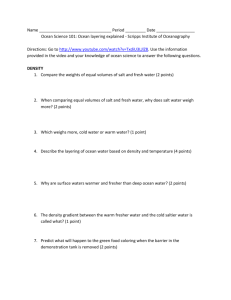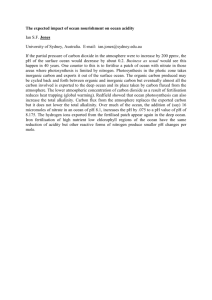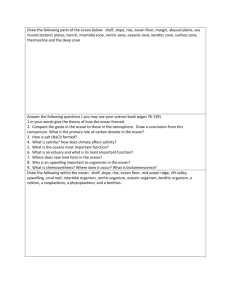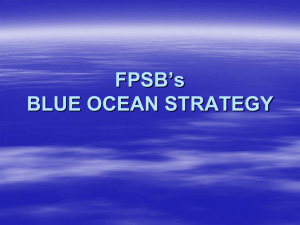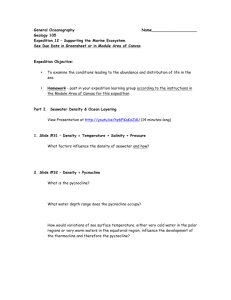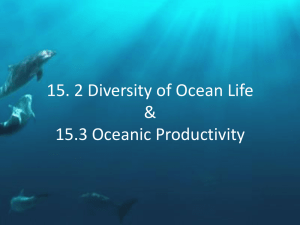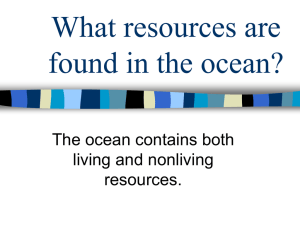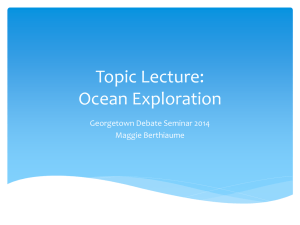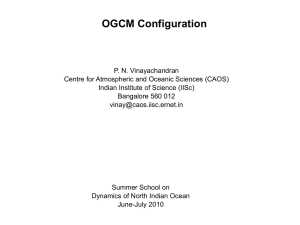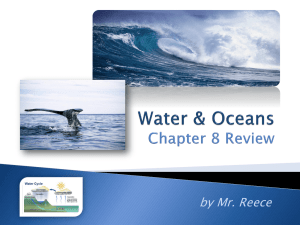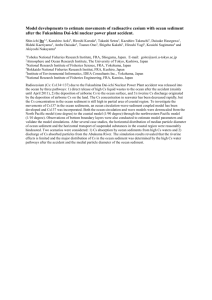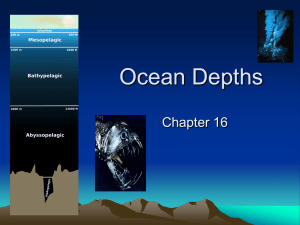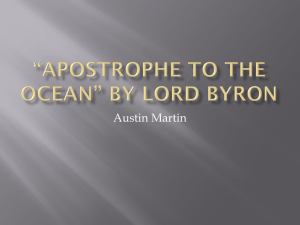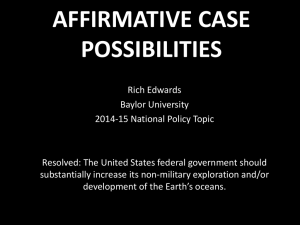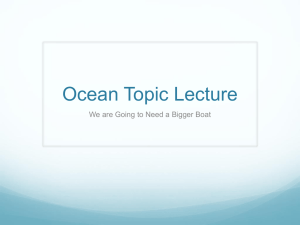Lesson 1 – Water Stratification – NON-NARRATED - C-MORE
advertisement
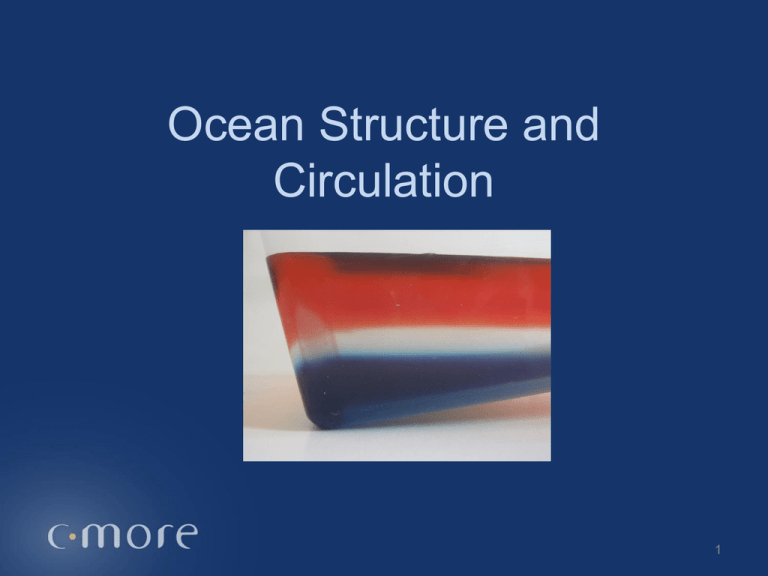
Ocean Structure and Circulation 1 Ocean Model Temperature Warmer Depth Surface Colder Deeper 2 Ocean Model 3 Ocean Model “Warm” shallow surface layer Transition Zone Cold deep layer How do the layers form? 4 Surface Layer Transition Zone Homogeneous Ocean Deep Water 5 Taking the Temperature C Conductivity TTemperature D Depth www.soest.hawaii.edu 6 Ocean Temperature Surface Layer Thermocline = Temperature Transition Zone Change Deep Water • 90% of the total volume of ocean is this cold, deep water. •At depths greater than 1000m, temperature is approximately 4ºC (even in the tropics!!). windows.ucar.edu Why do layers form? 7 Because of Density Mass per unit volume hawaiianphotos.net Denser 3 3 1020-1028 19,300 kg/m kg/m Slashfood.com Lighter 1000 100 kg/m kg/m33 8 Ocean Density Surface Layer Pycnocline Transition Zone Pycnocline = Density Change Deep Water • Seawater density is controlled by Temperature and Salinity •In the ocean, Temperature has a greater effect on density windows.ucar.edu 9 Surface Layer Transition Zone Thermocline & Pycnocline Boundary Deep Water 10 Warmed and lit by sun Mixed Surface Layer Boundary Photosynthesis Less Nutrients Cold, Dark, No Photosynthesis , More Nutrients Deep Water 11 Summary • • • • Surface Ocean Warm Lit by the sun Has photosynthesis Less nutrients Deep Ocean • • • • Cold Dark No photosynthesis More Nutrients 12

